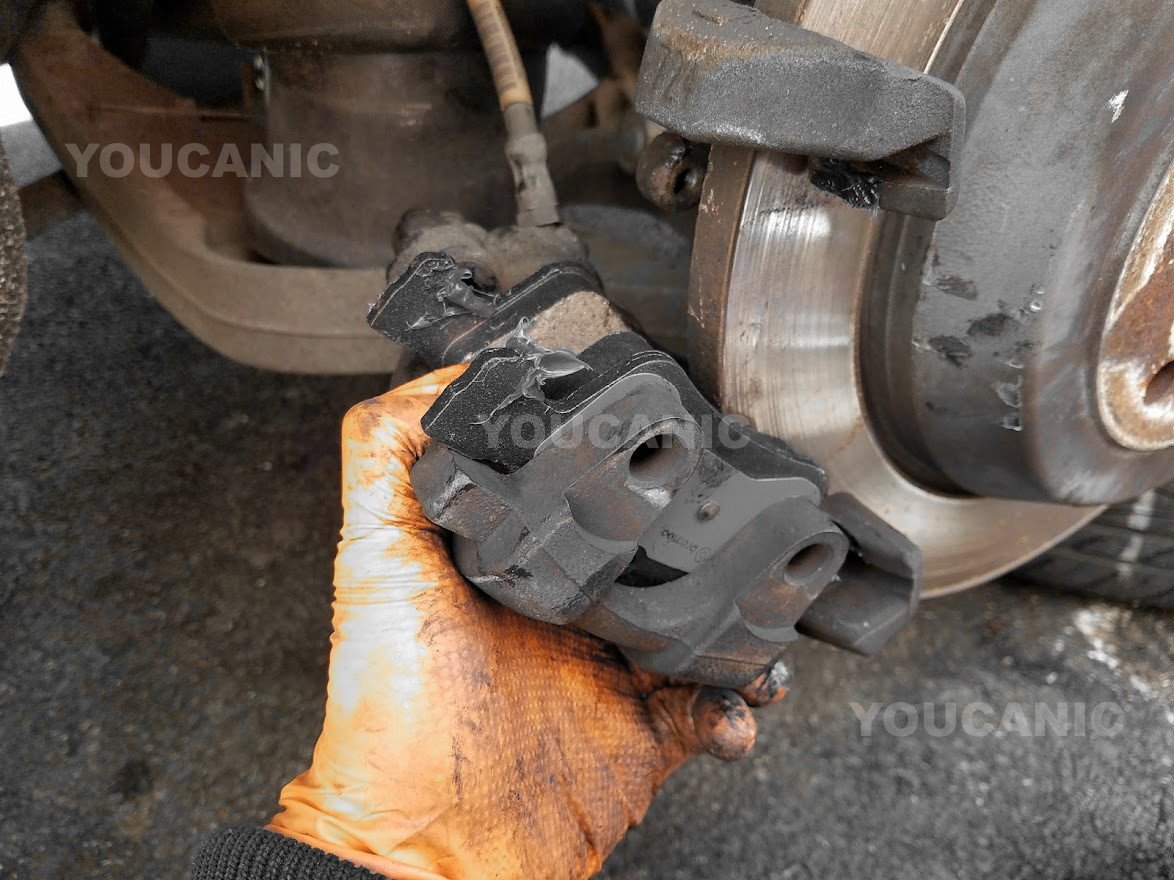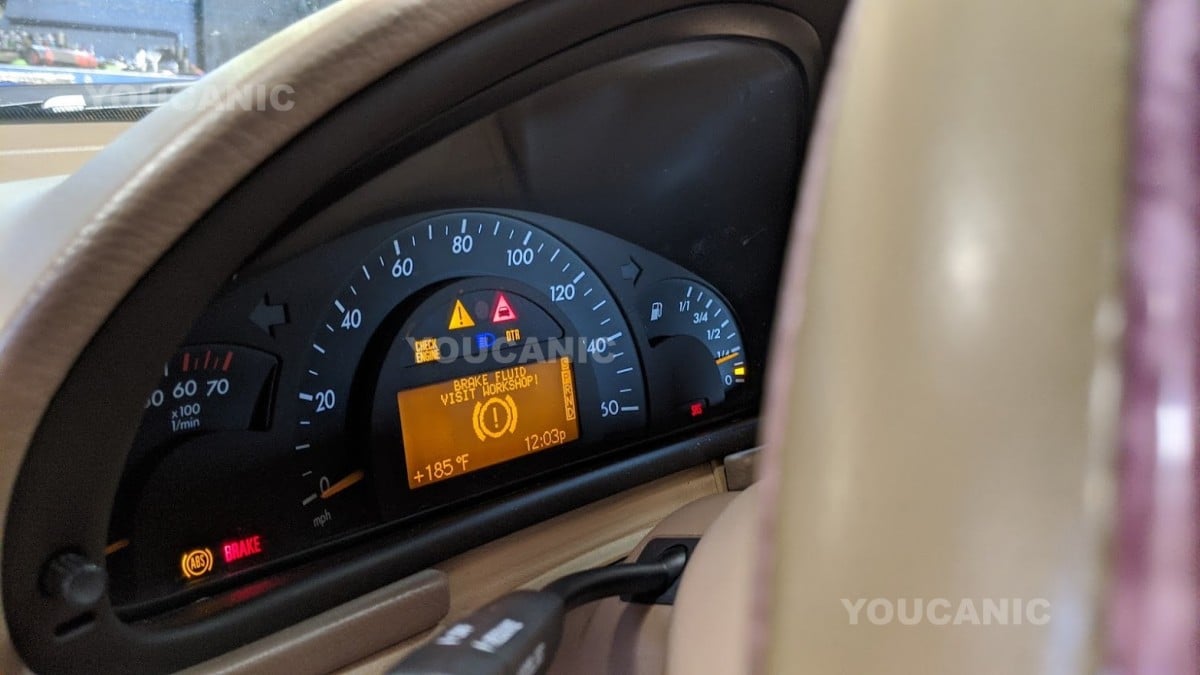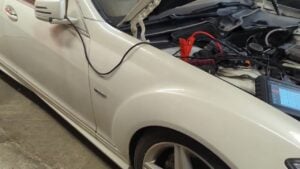Mercedes-Benz Check Brake Pad Wear Message
What’s causing this “check brake pad wear” message to appear on your Mercedes-Benz dashboard? At first, you might be confused about why this message appeared, but the cause is clear – your brake pads have worn down and must be replaced. It’s normal for brake pads to experience wear and tear over time.
If you receive a “check brake pad wear” message on your dashboard, it indicates that your brake pads need to be replaced. Over time, brake pads experience natural wear and tear, which can reduce their effectiveness. To resolve the issue, you need to change your brake pads. You can watch a helpful video on changing the brake pads and fixing the check brake pad wear message to assist you with this. The video will guide you through the steps to replace your brake pads and restore the proper function of your vehicle’s braking system. With the right tools and a little know-how, you can change your brake pads and resolve the check brake pad wear message yourself.
What does Check Brake Pad Wear mean on a Mercedes-Benz?

Check brake pad wear means that the front or rear brakes have worn and need to be replaced. The error message comes up when the brake pad material has worn to the minimum thickness, which means the brake pads must be replaced. As the brake pads wear out to minimum thickness, the wear sensor inside the brake pad comes in contact with the rotor, which then turns on the warning message.
“Check Brake Pad Wear” is a warning message that appears on the dashboard of a Mercedes-Benz vehicle when the brake pads have worn down to a level that requires attention. The message serves as a reminder for the driver to check the brake pads and, if necessary, replace them. Over time, brake pads wear down from normal use and must be replaced to ensure the vehicle’s braking system functions properly. Ignoring the warning message can further damage the braking system and decrease performance, so it’s important to address the issue as soon as possible.
How do you check brake pad wear on a Mercedes-Benz?

When you check brake pad wear on a Mercedes-Benz, you don’t know which needs to be replaced. Your front brake pads most likely need to be replaced, but you need to inspect the pads.
There are two methods to check which brakes are worn. One method is to use a Mercedes-Benz scanner and read the fault codes. The YOUCANIC scanner will show if it is the front or rear brakes. The option is to remove the brake pads and inspect them for wear. You will notice that one set of brake pads may be more worn than the other.
In some cases, the brake pads may not wear eventually. The outer pad may have plenty of life left, while the inner pad is completely worn out. Check the inner brake pad, not the outer one, since the wear sensor is also installed in the inner brake pads.
How do you reset Mercedes-Benz check brake pad wear?
Mercedes-Benz check brake pad warning message resets automatically once you replace the worn brake pads. There is no procedure to be carried out to reset the brake pad wear. If you don’t replace the worn brake pads, the message won’t reset.
I changed the brake pads on my Mercedes-Benz, but the check brake pad still comes up.
There are two common reasons why the check brake pad message comes up even after replacing the brake pads.
- You did not replace the brake pad wear sensor. Every time you change the brake pads, you must also replace the brake pad wear sensor on a Mercedes-Benz.
- The other set of brakes is worn as well. If you replaced the front brakes and sensors but are still getting a check brake pad wear message, your rear brake pads may also be worn and need to be replaced.
Other issues, including damaged modules, connectors, wires, etc., can prevent “check brake pad” warning messages from resetting. Still, the most likely scenarios are that the wear sensor wasn’t replaced or another set of brakes is also worn.
What is a Mercedes-Benz brake wear sensor?

The brake pad wear sensor alerts the driver that the brake pads must be replaced on the Mercedes-Benz. Depending on the Mercedes-Benz model and year, the wear sensors are designed to break or complete a circuit once the brake pad gets worn out, enough for the sensor to contact the brake rotor.
Can I drive a Mercedes-Benz that shows check brake pad wear?

Once the warning message comes up, you typically have about 200-400 miles of life left on those brake pads. If you go past that point, the brake pads will wear completely. In addition, check brake fluid level warning may come on if brake pads are not replaced on time.
Do all Mercedes-Benz wheels have brake pad wear sensors?
No. Mercedes-Benz cars typically have only two brake pad wear sensors, one per axle. Typically, there is a brake wear sensor at the front left wheel and another for the rear axle at the right rear wheel.
Can I reuse my old Mercedes-Benz wear sensors?
No. Once the brake pads wear, they also wear the insulation for the wear sensor. The sensor cannot be reused once the insulation exposes the wire underneath.
If you replace the brake pads before getting the brake-worn warning message, you can reuse the sensor in those cases. We hope you find the Mercedes-Benz Check Brake Pad Wear Message guide helpful. Check these troubleshooting and repair guides for more help on your Mercedes-Benz.








